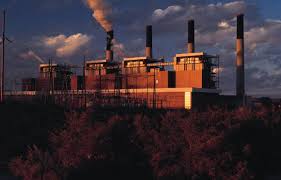Anthropogenic factor acquires more and more value in biosphere development invading in natural processes and affecting the quality and the rate of harmlessness of essential environmental sources for human health.

Unfavourable factors of the technosphere lower the quality of the environment and have effect on human health. Nowadays, we face the problem of ecological pathology which is the result of physical, chemical and biological factors having mostly anthropogenic origin.
Consequences of unfavourable impact of environmental factors on human heath may be rather different. Acute intoxications and conditions have definite clinical signs. Chronic conditions may appear under the influence of low doses of chemicals, and usually, they develop atypically making it extremely hard to prove that just ecological factor is participating in the emergence of such conditions.
Ecological pathology is defined as appearance of new, unusual diseases, atypical clinical course of known diseases, and «rejuvenation» of some diseases (diabetes mellitus, essential hypertension, myocardial infarction and even cerebral strokes in children). Examples of «new» ecological diseases are dioxin syndrome (chloracne, skin pigmentation, immunodeficiency); «strange» Minamata disease (paralyses, mental retardation due to lesion of the central nervous system caused by the accumulation of methylmercury in seafood); general immune depression — «chemical» AIDS caused by dioxins, heavy metals, toxic radicals etc.
Numerous new environmental factors totally alien to the biosphere show properties potentially dangerous for the genetic apparatus. Nowadays, just less than 1% of substances of biosphere are examined according to genetic parameters. Nevertheless, even that one percent includes thousands of mutagens dangerous for a human organism. Environmental mutagens including chemicals, ionizing radiation etc. penetrate into cells and damage their genetic apparatus causing mutations.
Mutagenic activity may show itself in increased rate of chromosomal aberrations in somatic and germ cells that causes neoplasms, spontaneous miscarriages, infertility, and congenital malformations of fetus. Pregnancies and labors having unfavourable progress are more common in contaminated areas. When lesion affects DNA, embryos die or babies are born with hereditary defects.
Air pollution stipulates up to 30% of general diseases of people living in industrial centres. Polluted air affects uppermost lungs; sulfur oxides and tiny particles are the most dangerous. There are two categories of respiratory diseases: acute (cold, bronchitis, pneumonia) and chronic (chronic bronchitis, asthma). Respiratory diseases in industrial nations account more cases than all other diseases put together.
Environmental pollution have an impact on the development of such a disease as lung cancer. The probability of lung cancer is 20–30% higher for megalopolis dweller than for people living in villages or small towns. It is supposed that nitrogen oxides found in the air can react with other pollutants and form nitrosamines — substances known as the most active carcinogens.
During last decades, the problem of air pollution attracts more and more attention of doctors and ecologists since those substances are quite toxic and widespread (benzopyrene, lead, mercury, copper, aluminum, cadmium and other heavy metals). Literature data indicate that toxic and background levels of lead have a great influence on women’s and children’s organisms which is evinced in the disorders of women’s reproductive function, pregnancies having pathological progress, preterm labors, disorders of fetus and newborn’s state of health.
Experts believe that 5–6% of county’s GDP is spent to compensate the harm for human health doing by unfavourable ecological situation. That is why preservation of the environment and people health has